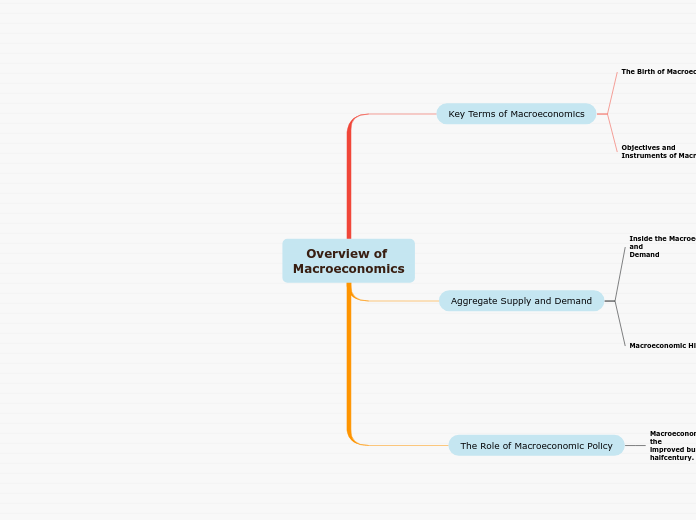arabera JESUS VASQUEZ 5 years ago
1147
Overview of Macroeconomics

arabera JESUS VASQUEZ 5 years ago
1147

Honelako gehiago

To name your story, you have to think about the overall message and what you want your audience to understand from the story. Also, make it relevant and easy to remember.
The final act in our macroeconomic drama concerns the growth of output and prices over the entire period since 1900
The 1970s were a time of troubles, with rising oil prices, grain shortages, a sharp increase in import prices, union militancy, and accelerating wages.
The American economy entered the 1960s having experienced multiple recessions.
Fiscal policy
Monetary policy
Capital, labor, technology
Potential output
Price level and costs
In the beginning of the story (or the exposition), you will need to introduce the setting and characters. You might also want to introduce the main conflict. This part of the story is important because it gives the reader necessary background information and maybe even a first insight into a character’s personality.
The setting (time & place) of a story can change throughout the plot.
Your story can take place wherever your imagination will take you to.
For example: in an elevator, in an enchanted forest, etc. Don't forget to give details of the environment each time the setting changes, otherwise, the story can be confusing. Also, mention the seasons as each of them has unique weather and events.
Measuring Economic Success
The major macroeconomic goals are a high level and rapid growth of output, low unemployment, and stable prices
Inflation
Price index
Unemployment rate
Gross Domestic Product
Output
Characters are essential to a good story. Usually, the protagonist(s) is/are the most affected by the plot. Introduce a character by focusing on their actions, interests, and occupation, as the physical appearance doesn't make a difference in most cases.
Type in the name of your character.
The U.S. Congress formally proclaimed federal responsibility for macroeconomic performance
Which traits best describe the character's personality? Choose more if necessary:
Keynes (1883–1946) was a many-sided genius who won eminence in the fields of mathematics, philosophy, and literature.
Choose the type of your chacter: